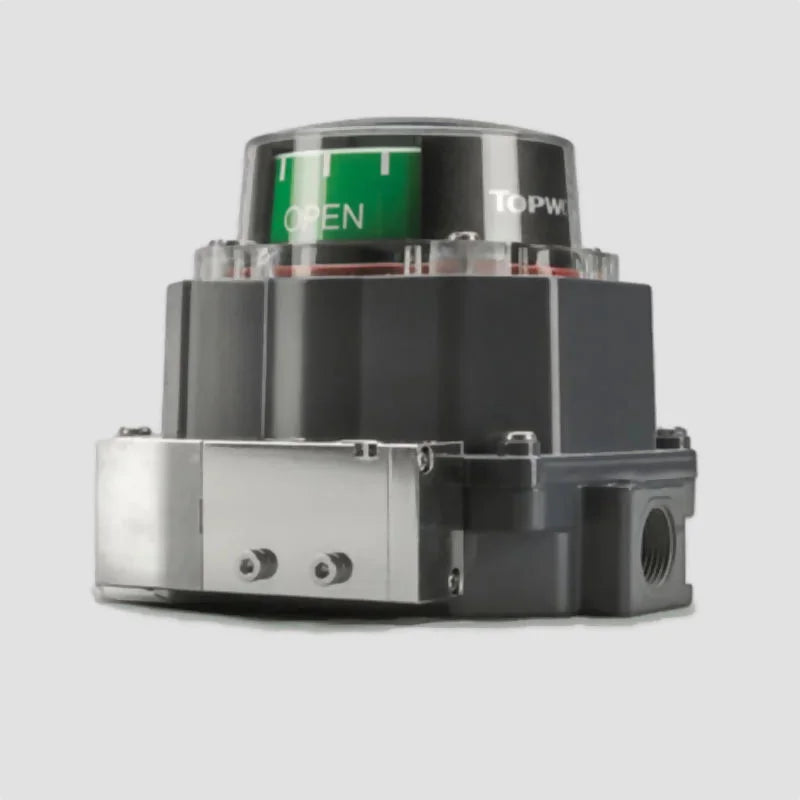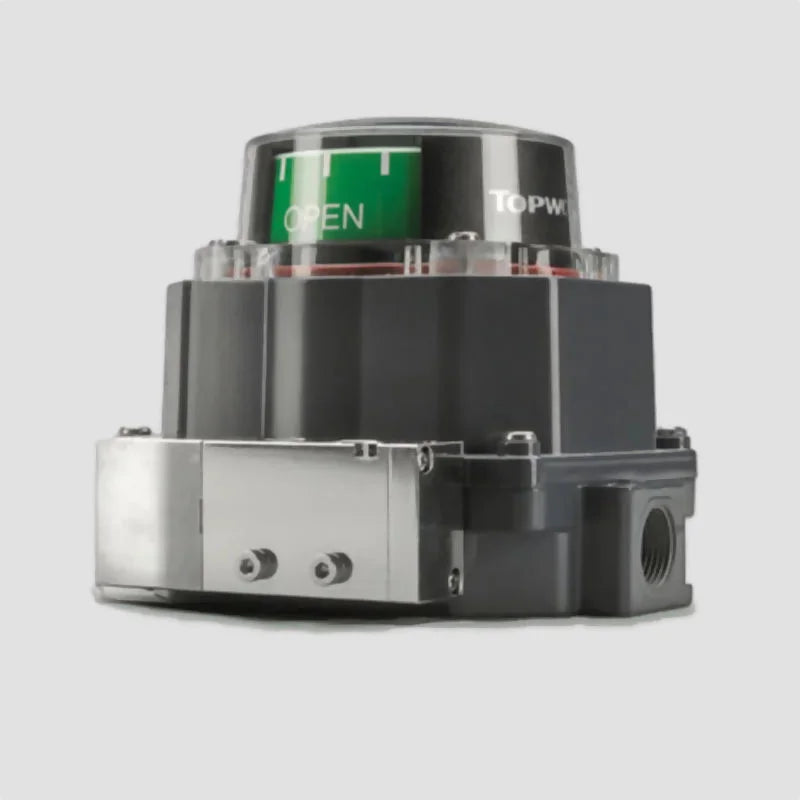Topworx Switchboxes
TopWorx Limit Switch Box TVL-R2GGNPM Valve Monitor
TopWorx Limit Switch Box TVL-R2GGNPM Valve Monitor
Couldn't load pickup availability
The TopWorx TVL-R2GGNPM Limit Switch Box is a high-performance, weatherproof valve monitor built to deliver reliable position feedback in the harshest industrial environments. Equipped with dual GO™ proximity switches, this model is part of the trusted TopWorx TVL Series, known for combining precision, rugged construction, and long-term reliability for use with quarter-turn pneumatic actuators.
Designed for demanding sectors such as oil & gas, chemical processing, power generation, and marine operations, the TVL-R2GGNPM features IP67 ingress protection, a NAMUR-compatible mounting base, and a GRP (glass-reinforced polyester) enclosure. The GO™ switches provide non-contact switching with high durability, eliminating wear and tear from mechanical components.
🔑 Key Features:
2 × GO™ Proximity Switches (SPDT): Delivers accurate and long-lasting open/closed position feedback
Visual Dome Indicator: Instant on-site visibility of valve position
NAMUR Mounting Interface: Fits standard pneumatic actuators with ease
IP67 Enclosure: Fully sealed for protection against water, dust, and contaminants
Corrosion-Resistant GRP Housing: Lightweight yet durable, ideal for harsh environments
Dual Conduit Entries: 2 × 1/2” NPT for flexible and secure cable routing
Extended Service Life: GO™ switches thrive in extreme temperatures and high-vibration applications
Wide Operating Range: From -40°C to +85°C for versatility in any setting
📊 Product Specifications
| Specification | Details |
|---|---|
| Model | TVL-R2GGNPM |
| Manufacturer | TopWorx (Emerson) |
| Series | TVL Series |
| Switch Type | 2 × GO™ SPDT Proximity Switches |
| Visual Indicator | Dome-Style Open/Closed Indicator |
| Mounting Interface | NAMUR Standard |
| Enclosure Rating | IP67 |
| Material | Glass-Reinforced Polyester (GRP) |
| Conduit Entries | 2 × 1/2” NPT |
| Operating Temperature | -40°C to +85°C |
| Certifications | CE, CSA, ATEX (depending on config) |
| Applications | Valve Automation, Hazardous Locations, On/Off Actuators, Outdoor Installations |
The TopWorx TVL-R2GGNPM delivers industry-leading durability and performance with the added benefit of GO™ Switch reliability. It's the ideal solution for engineers looking to minimise downtime and maximise valve feedback precision in mission-critical systems.
📦 Need help or ready to order? Contact our team today for expert guidance and same-day dispatch options!
Share

Enquire Online!
FAQ's
What is the difference between a valve and an actuator?
What types of actuators are available?
The main types of actuators are:
Pneumatic actuators – use compressed air for fast, reliable operation.
Electric actuators – use electrical power for precise control.
Hydraulic actuators – use fluid pressure for high-torque applications.
Each type offers unique advantages depending on the environment, media, and system control needs.
How do I choose the right actuator for my valve?
To select the correct actuator, consider:
Valve type and torque requirement
Power source available (air, electric, or hydraulic)
Operating environment (temperature, humidity, hazardous area)
Control signal type (on/off or modulating)
Matching actuator torque and compatibility with the valve’s ISO mounting ensures reliable performance.
What are the main types of valves used in automation?
The most common valves in automated systems include:
Ball valves – for tight shutoff and quick operation.
Butterfly valves – for larger flow control with compact design.
Globe valves – for precise throttling and flow regulation.
Check valves – to prevent backflow.
Gate valves – for full bore flow isolation.
What’s the difference between a double-acting and spring-return actuator?
Double-acting actuators use air (or power) to both open and close the valve.
Spring-return actuators use air to open (or close) the valve, and a built-in spring to automatically return it to a safe position when power or air is lost — ideal for fail-safe operation.
How often should valves and actuators be serviced?
Regular maintenance intervals depend on operating conditions, but a good rule of thumb is to inspect every 6–12 months.
This includes checking for leaks, lubrication, seal wear, and actuator responsiveness to prevent unexpected downtime.

